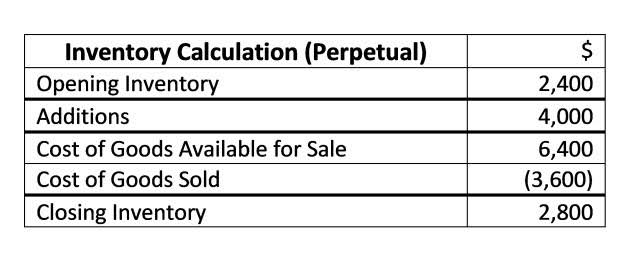News & Notice
공지사항
| 제목 | Treasury, IRS issue guidance on the incremental cost for the Commercial Clean Vehicle Credit Internal Revenue Service | ||
| 작성일 | 2022-02-22 | 작성자 | 송건우 |

However, cost-effectiveness analyses of nivolumab and pembrolizumab, based on the ATTRACTION-3 and KEYNOTE-181 studies, demonstrated that neither of them was cost-effective when compared to chemotherapy in China [33, 34]. Nevertheless, the above pharmacoeconomic studies were designed with chemotherapy as the control group, and there were almost no published studies on cost-effectiveness analyses between different ICIs for second-line treatment of ESCC. To the best of our knowledge, this is the first study to evaluate the cost-effectiveness of the five alternative ICIs for treating ESCC in the second line. Businesses can make well-informed decisions about production levels, pricing policies, and resource allocation by focusing on the shift in total costs related to producing an additional unit. The calculation of https://www.bookstime.com/articles/us-accounting-vs-international-accounting needs to be automated at every level of production to make decision-making more efficient. There is a need to prepare a spreadsheet that tracks costs and production output.
Additional Resources
Incremental cost analysis will save you from engaging in unprofitable business ventures that can ultimately damage your financial state. Here are some incremental cost examples based on different scales of production. Strategic consideration of incremental costs becomes especially important to avoid the traps of overproduction or underproduction, maximize resource utilization, and maintain a balanced operational strategy. The distribution of fixed costs to total costs decreases proportionately with the number of units produced, so extra care must be taken. Since the costs directly affected by changes in production volume are dynamic, the term ‘incremental cost’ highlights how they differ from fixed costs.
Tracking Costs

In the PSA, the probability of tislelizumab, camrelizumab, nivolumab, and pembrolizumab being the most cost-effective option compared to sintilimab was 15.6%, 0%, 0%, and 0%, respectively (Fig. 3B). The cost-effectiveness acceptability curves showed that the probability of sintilimab being cost-effective in simultaneous comparisons of competing regimens was 84.4% at a WTP threshold of $38,223.34/QALY. Tislelizumab was the most cost-effective regimen when the WTP threshold was between $72,133/QALY and $241,000/QALY. When the WTP threshold was greater than $241,000/QALY, camrelizumab was likely the most cost-effective option among the five competing regimens. Health utility is a quantification of the health-related quality of life for each health state. Utility values for each health state and disutility values for AEs were derived from previously published studies [21, 25, 27, 29, 30].
- It is a crucial concept for decision-makers, allowing them to evaluate the profitability of specific actions and make informed choices that contribute to the financial success of their business.
- Alternatively, once incremental costs exceed incremental revenue for a unit, the company takes a loss for each item produced.
- The attempt to calculate and accurately predict such costs assist a company in making future investment decisions that can increase revenue and reduce costs.
- However, management must be mindful that groups of production units may have materially varying levels of marginal cost.
- The change in total expenses is the difference between the cost of manufacturing at one level and the cost of manufacturing at another.
Incremental Cost vs. Marginal Cost
Conversely, fixed costs, such as rent and overhead, are omitted from incremental cost analysis because these costs typically don’t change with production volumes. During the manufacturing process, a company may become more or less efficient as additional units are produced. This concept of efficiency through production is reflected through marginal cost, the incremental cost to produce units. It is an important concept in cost accounting, as marginal cost helps determine the most efficient level of production for a manufacturing process.
- As seen in Case 2, incremental cost increased significantly by $55,000 to produce 5,000 more units of tobacco.
- Our analysis indicated that the sintilimab was likely the most cost-effective among the five competing ICIs, which may provide economic evidence for updating the NRDL in the future.
- The increased production will yield 25 total units, so the change in quantity of units produced is one ( ).
- The marginal cost slope will vary across company and product, but it is often a U-shaped curve that initially decreases as efficiency is realized only to later potentially exponentially increase.
- The computation of incremental cost is necessary to assess the changes in expenses related to a production increase.
In the univariate sensitivity analysis, parameter variables were allowed to vary within a specific range of 95% confidence intervals or ± 20% deviation from baseline values (Table 1). The results of univariate sensitivity analysis were presented in tornado diagrams. In the PSA, a Monte Carlo simulation of 1,000 iterations was conducted to evaluate the impact of model variables that follow particular distributions. Log-normal distribution was utilized for HRs between competing regimens, while gamma distribution was employed for costs. Additionally, beta distribution was used for proportions, incidence rates, and utility values (Table 1). A scatter plot of 1000 iterations and the cost-effectiveness acceptability curve were used to display the results of the PSA.
Additional file 1. Additional information regarding the methodology.
In this case, each additional unit costs $50 ($500 divided by 100 units), making it easier for ABC Manufacturing to evaluate the profitability of the promotional campaign. In this case, the incremental cost of $10 is the relevant cost for comparison. You should consider whether Plan A’s additional features and benefits outweigh the additional cost. This straightforward calculation provides a clear picture of the financial impact of expanding production, aiding businesses in making informed decisions.

How to Determine the Unit Costs of Production
- Marginal cost is reflective of only one unit, while average cost often reflects all units produced.
- Let’s say it has cost the company $500,000 to manufacture 1,000 exercise bikes.
- Below are the current production levels as well as the added costs of the additional units.
- Since the fixed cost is being incurred regardless of the proposed sale, it is classified as a sunk cost and ignored.
- Long-run incremental cost (LRIC) is a forward-looking cost concept that predicts likely changes in relevant costs in the long run.
- Forecast LRIC is evident on the income statement where revenues, cost of goods sold, and operational expenses will be affected, which impacts the overall long-term profitability of the company.
Base-case analysis
Margins and Thinking at the Margin – Econlib
Margins and Thinking at the Margin.
Posted: Fri, 06 Jul 2018 00:07:49 GMT [source]
